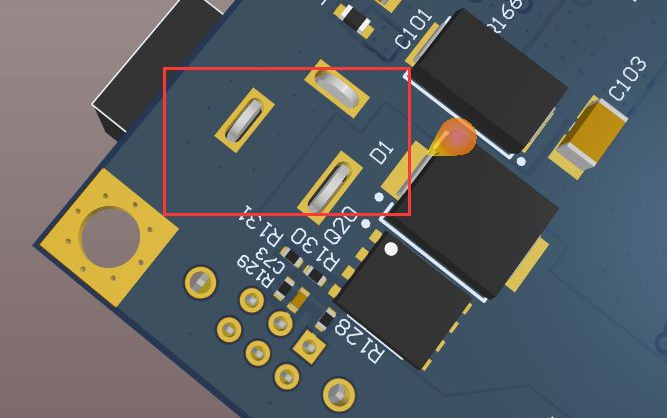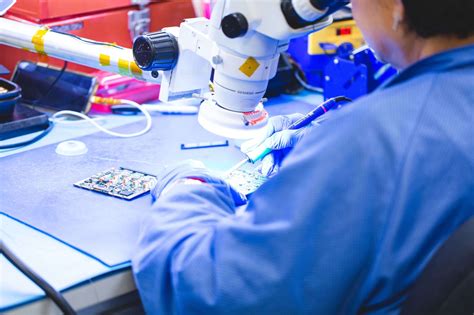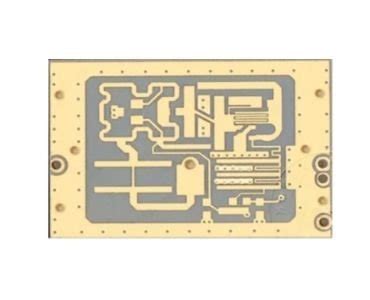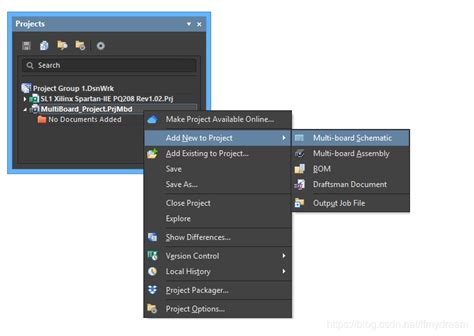Mastering Board PCB Assembly: Key Insights for Success
Key Takeaways
In the realm of pcb assembly, understanding the critical elements that contribute to successful outcomes is paramount. This involves recognizing the significance of careful planning and execution in every stage of the pcba process. One key takeaway is the necessity of meticulous design; effective pcb assembly begins with robust design practices that prioritize manufacturability and reliability. Moreover, adopting best practices can significantly enhance efficiency in operations, leading to quicker turnaround times and higher quality outputs. Quality control measures are also essential for ensuring that each pcba meets rigorous standards and performs as expected in its final application. Staying informed about common challenges, such as soldering defects or component misplacement, allows teams to implement proactive solutions, thereby mitigating potential setbacks. Finally, embracing emerging technologies can pave the way for innovation in pcb assembly, making it possible to leverage automation and sophisticated software tools that further enhance production capabilities. These insights collectively underscore the importance of a strategic approach to optimizing pcb assembly processes for sustainable success.
Introduction to Board PCB Assembly: An Overview
In the realm of electronics, understanding PCB assembly—or PCBA—is crucial for both hobbyists and professionals. The process involves the meticulous arrangement of electronic components onto a printed circuit board, which serves as the foundation for various devices. At its core, PCB assembly encompasses multiple steps, including design, fabrication, and assembly, each of which plays a significant role in ensuring a successful outcome.
The demand for highly efficient and reliable PCBA has surged with the rapid advancement of technology. Therefore, grasping the intricacies of this process not only aids in optimizing production but also contributes to cost-effectiveness and timely delivery. A pivotal aspect of successful board PCB assembly lies in selecting the right components; this requires careful consideration of factors such as compatibility, size constraints, and electrical characteristics.
To understand this further, here’s a simplified table that captures the primary stages of PCB assembly:
| Stage | Description |
|---|---|
| Design | Layout creation using PCB design software |
| Fabrication | Manufacturing bare boards based on design files |
| Component Placement | Accurately placing components on the board |
| Soldering | Joining components to the board via soldering methods |
| Inspection | Quality checks to ensure functionality and reliability |
Each stage presents unique challenges that can impact overall quality and efficiency. By mastering these fundamentals, individuals can not only enhance their own skills but also contribute significantly to successful projects in electronics. Thus, understanding board PCB assembly becomes an essential part of any electronics-related endeavor.
Key Components of PCB Assembly: Understanding the Basics
In the realm of pcb assembly, understanding the foundational elements is crucial for successful project execution. At its core, PCB assembly (or PCBA) involves integrating various components onto a printed circuit board (PCB) to create a functional electronic device. The primary components include resistors, capacitors, integrated circuits (ICs), and other passive or active elements. Each component plays a specific role in ensuring optimal performance. For instance, resistors manage current flow, while capacitors store energy and stabilize voltage levels. Understanding the characteristics and functions of these elements enables engineers to make informed choices during the design phase, ultimately enhancing efficiency in the assembly process.
Moreover, selecting appropriate materials for both the PCB substrate and components is crucial; they must be compatible to ensure durability and reliability. Aspects such as thermal conductivity, flexibility, and dielectric properties should be taken into account during material selection. Additionally, ensuring that components are correctly oriented on the board can significantly impact the integrity of connections during soldering. Utilizing comprehensive documentation in the form of schematics and assembly instructions can also facilitate better communication among team members involved in the pcba process.
Investing time in familiarizing oneself with these critical elements not only nurtures a deeper understanding of PCB assembly but also sets a strong foundation for implementing best practices further along in the production cycle. Mastery over these basics undoubtedly paves the way for more advanced techniques that enhance precision and quality in final assembled products.
Best Practices for Efficient PCB Design
Efficient PCB design is critical in achieving optimal outcomes in PCB assembly. Implementing robust design practices can significantly streamline the entire PCBA process and enhance overall performance. Start by adopting a modular approach in your design. This means breaking down complex circuits into smaller, manageable sections that can be tested and refined independently. By doing so, you not only simplify the troubleshooting process but also ensure greater reliability in each component’s function.
One essential practice is to prioritize the component layout. “Proper placement can drastically reduce routing complexity,” notes industry expert Jane Doe. This involves strategically positioning components to minimize trace lengths, which can reduce signal loss and improve response times. Additionally, considering thermal management within your design can help prevent overheating, thus ensuring a longer lifespan for your devices.
Another key aspect is adherence to manufacturing guidelines set forth by your chosen PCB manufacturer. Design for Manufacturability (DFM) principles can guide you in avoiding common pitfalls that could increase costs or delay production timelines. It’s advisable to stay informed about these specifications and incorporate them into your early design drafts.
Lastly, leveraging simulation tools during the initial stages of designing can reveal potential flaws before physical prototypes are created. This not only saves time but also invaluable resources. By embracing these best practices, you will set a solid foundation for an efficient and effective PCB assembly process that leads to successful project outcomes while maintaining high quality standards in every step of production.
Streamlining the Assembly Process: Tips and Techniques
Efficient pcb assembly requires a systematic approach that enhances productivity while maintaining high-quality standards. One of the most important tips is to invest in the right pcba tools and equipment. A well-equipped workspace minimizes delays and reduces the likelihood of errors during assembly. Additionally, implementing a standardized workflow can significantly streamline processes by assigning specific roles to team members, ensuring everyone knows their responsibilities.
Another effective technique is thorough communication among team members throughout the assembly process. Regular team meetings can address any issues that arise, helping to foster a culture of collaboration and innovation. It’s also crucial to create clear documentation for each stage of the pcb assembly. This documentation serves as a guideline for best practices and allows for easier troubleshooting when problems occur.
Moreover, adopting automation where possible can speed up repetitive tasks. Automation not only increases accuracy but also allows human resources to focus on more complex aspects of the pcba, leading to improved efficiency overall. Continuous monitoring of performance metrics can further refine these processes. Regular assessments will help identify bottlenecks or areas requiring refinement, ensuring your assembly techniques evolve alongside industry standards.
In summary, by investing in tools, enhancing communication, creating comprehensive documentation, embracing automation, and continuously monitoring performance metrics, you can substantially streamline the pcb assembly process. These strategies collectively contribute to achieving successful outcomes while maintaining high quality in your projects.
Quality Control Measures in PCB Assembly
In the realm of pcb assembly, effective quality control measures are paramount for ensuring that the final products meet industry standards and customer expectations. A robust quality control system includes several key components, such as thorough inspection and testing processes. PCBA manufacturers often utilize a combination of automated inspection technologies, such as Automated Optical Inspection (AOI) and X-Ray inspection, to identify defects early in the production cycle. These advanced methods allow for real-time feedback, enabling teams to address issues before they escalate and reduce costly rework.
Additionally, it is essential to establish stringent guidelines for soldering quality. Utilizing high-quality materials and adhering to best practices in soldering techniques greatly contributes to the overall integrity of the assembly. Regular training sessions for personnel engaged in pcb assembly are also vital; they ensure that team members are updated on the latest techniques and technologies relevant to quality assurance.
Another aspect worth noting is the need for comprehensive documentation throughout all stages of production. Detailed records facilitate traceability, allowing manufacturers to pinpoint sources of defects accurately if issues arise later on. By establishing a culture of quality within the organization, teams can foster continuous improvement processes that not only enhance efficiency but also uphold high standards in PCBA outcomes. Ultimately, unwavering commitment to quality control measures positions manufacturers for long-term success in their PCB assembly endeavors.
Common Challenges and Solutions in Board PCB Assembly
In the realm of pcb assembly, several challenges frequently arise that can impact the overall quality and efficiency of the process. One major hurdle is design errors, which can lead to costly delays and increased rework. Employing advanced simulation tools during the design phase can help identify potential issues before they escalate into significant problems. Another challenge is managing the supply chain; unavailability of specific components can stall production. Developing strong relationships with suppliers and diversifying sourcing options are practical strategies for mitigating this risk.
Additionally, achieving optimal thermal management remains a pressing concern, as inadequate heat dissipation can damage sensitive electronic components. Implementing effective thermal analysis techniques during both design and assembly processes is essential for ensuring reliability. Furthermore, varying assembly techniques may lead to inconsistent quality; thus, maintaining standardized operating procedures across all pcba operations is crucial for consistency.
In conclusion, while challenges in board PCB assembly are inevitable, acknowledging them allows teams to implement proactive measures. By leveraging technology, enhancing supplier relationships, and adhering to best practices, manufacturers can significantly improve their assembly outcomes, leading to superior product performance and customer satisfaction.
Emerging Technologies Shaping the Future of PCB Assembly
As the field of PCB assembly evolves, several emerging technologies are poised to revolutionize the way PCBA processes are executed. One significant advancement is the integration of automation through robotics and advanced machinery, which enhances precision and reduces labor costs. These automated systems can handle repetitive tasks more efficiently, allowing skilled workers to focus on complex problem-solving and design modifications. Additionally, the rise of Internet of Things (IoT) applications enables real-time monitoring of the assembly process, enhancing transparency and streamlining operations. IoT devices can collect data that helps in analyzing production metrics, thus identifying bottlenecks and improving overall productivity. Furthermore, advancements in materials science have led to the development of more flexible and lightweight substrates, which are crucial for modern electronic devices that require compact solutions without sacrificing performance. The shift towards environmentally friendly materials also reflects a growing commitment to sustainability within the PCB assembly industry. By embracing these technologies and trends, companies are not only optimizing their production processes but also positioning themselves for future challenges and opportunities in a rapidly changing market landscape. This proactive approach will ensure higher quality outcomes and more reliable products that meet consumer demands efficiently.
Conclusion: Achieving Success in Your PCB Projects
In the journey towards mastering pcb assembly, it’s crucial to recognize that success hinges on a combination of thorough understanding, strategic planning, and execution. The complexity of pcba necessitates an in-depth knowledge of both the components and the processes involved. By implementing best practices and continuously optimizing the assembly process, teams can enhance overall efficiency and reduce errors. This undertaking often involves leveraging advanced technologies and automation, which not only streamline operations but also improve the quality of the final product. Furthermore, addressing common challenges proactively can mitigate potential setbacks, ensuring that projects remain on track. In summary, a comprehensive approach that focuses on quality control, innovative technologies, and effective problem-solving is essential for achieving successful outcomes in your pcb assembly projects. By fostering a culture of continuous improvement and collaboration among team members, businesses can position themselves for sustained success in an ever-evolving industry landscape.
Conclusion: Achieving Success in Your PCB Projects
In the realm of PCB assembly, understanding the nuances of the process is fundamental for achieving optimal results. Successful PCBA relies not only on precise design but also on effective management throughout the assembly phases. By incorporating best practices that include meticulous planning, comprehensive quality control measures, and embracing emerging technologies, individuals and organizations can significantly enhance both efficiency and output quality. Addressing common challenges such as component misalignment or soldering defects promptly can further streamline the entire PCB assembly process. As we advance in this field, equipping teams with the right knowledge and tools will ensure that they remain competitive and successful in their projects. Ultimately, a commitment to continuous improvement and adaptation to new trends is key to thriving in the dynamic landscape of PCB assembly.
FAQs
What is PCB assembly?
PCB assembly, commonly referred to as PCBA, is the process of assembling electronic components onto a printed circuit board. This involves soldering components onto the board to create a functional electronic circuit.
What are the key components of PCB assembly?
Key components of pcb assembly include resistors, capacitors, integrated circuits, and connectors. Each component plays a vital role in the performance and functionality of the final product.
How can I ensure quality in my PCB assembly projects?
To ensure quality in your PCBA, implement rigorous quality control measures throughout the process, such as automated optical inspection and verification testing. Regular audits and adherence to industry standards also contribute to enhancing quality.
What are common challenges faced during PCB assembly?
Common challenges in pcb assembly include component misalignment, soldering defects, and managing supply chain issues. Addressing these challenges requires proper training for personnel and effective use of technology.
How can I optimize my PCB design for assembly?
Optimizing your PCBA design involves simplifying layouts, minimizing layer counts, and ensuring component accessibility for soldering. Utilizing design software can also help identify potential issues early in the process.







